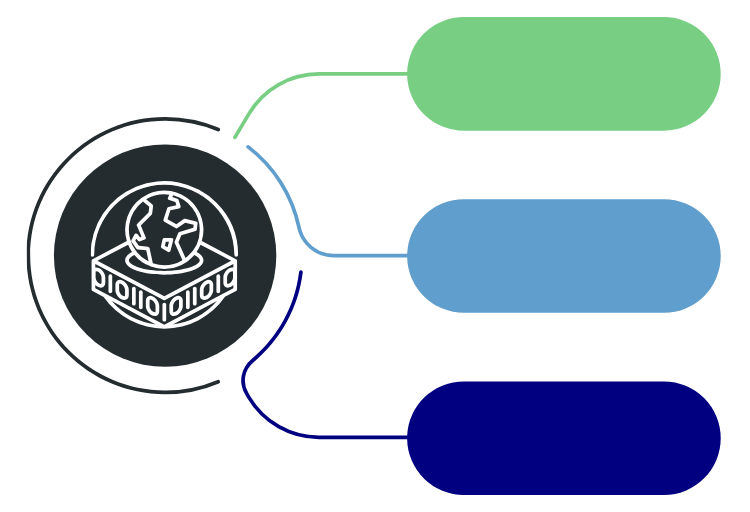How It Works
Process each unit of data just once, making it reusable and accurate across the system with zero reliance on SQL.
Augmetrics® unit processing operates in a manner analogous to the human brain: previously processed information is permanently stored in a central brain (Registry) as learned responses never to be forgotten.
These information objects (IOs) are the centerpiece of Augmetrics® unit processing, allowing for compute functionality very different from AI directly accessed via LLMs.


Augmetrics® was invented 10+ years ago to remember information like the human brain.
Semantic Query Layer
Chloe NLP™ , the Augmetrics® analytics agent, creates her own semantic layer. For each query or phrase that generates an information object, every user gets the same answer when using that query. The system also adds (and audits) query phrase variants (think “synonyms”) that also would result in that information object, resulting in a powerful vocabulary of the most likely natural language queries that generate consistent, highly accurate and instantly retrievable answers. These phrase variants – and the original query – all refer directly to the IO stored in the Registry. For example, if the original IO was “last month’s sales”, Chloe looks to find as many phrase variations of that query as are most likely to lead the user to that IO. So queries like “what were last month’s sales”, “prior month revenue?” or “sales the month before” each will retrieve the same value as the original query.
LLM Optimizer
Augmetrics® is an LLM optimizing platform. Beyond the targeted semantic precision of Right Answer Mode, Chloe NLP™ is an LLM optimizing agent. She is hard-wired to forego the expensive, energy-draining GPU processing of LLM queries for the much cheaper and quicker CPU-driven answers and still keep the highest possible answer accuracy rate. Likewise, Augmetrics® also is an LLM optimizer at the platform level, monitoring prompt usage, per query unit costing, model monitoring and recommendations.
From per query cost to model recommendation and above all, the highest possible answer accuracy, Augmetrics® is designed to deliver AI optimization.
How Does That Happen?
Leaving aside natural language processing (NLP) for a moment, Augmetrics® unit processing, follows these core principles:
- No duplicate processing.
Augmetrics® does not duplicate information processing. When one person creates an information object (think of IOs as broadly relating to a single fact, like a KPI), it is processed once according to its schedule, is instantly available to all users for use in any form of communication (i.e. reports, presentations, personal dashboards, emails, etc.)
- CPUs not GPUs.
All Augmetrics® applications network resources to date have used lower cost, lower resource-consumption non-GPU chips and we can see no reason to change that in the future.
- Eliminate Merges and Joins.
There are few if any joined or merged data sets when building IO values from multiple data sources. The ‘joining or combining action’ happens at the UI or process levels.
- Data source fingerprinting.
– as each data source is ingested into Augmetrics®, that source is fingerprinted so that its common or default fields will be recognized by each subsequent customer ingesting that source. Among other things, this helps to normalize and secure data sources to help prevent the future ingestion of corrupt or non-standard data.
The process-once, use-forever architecture built into Augmetrics® enables the creation of the permanent information objects that are the centerpiece of the semantic layer and the query layer caching.